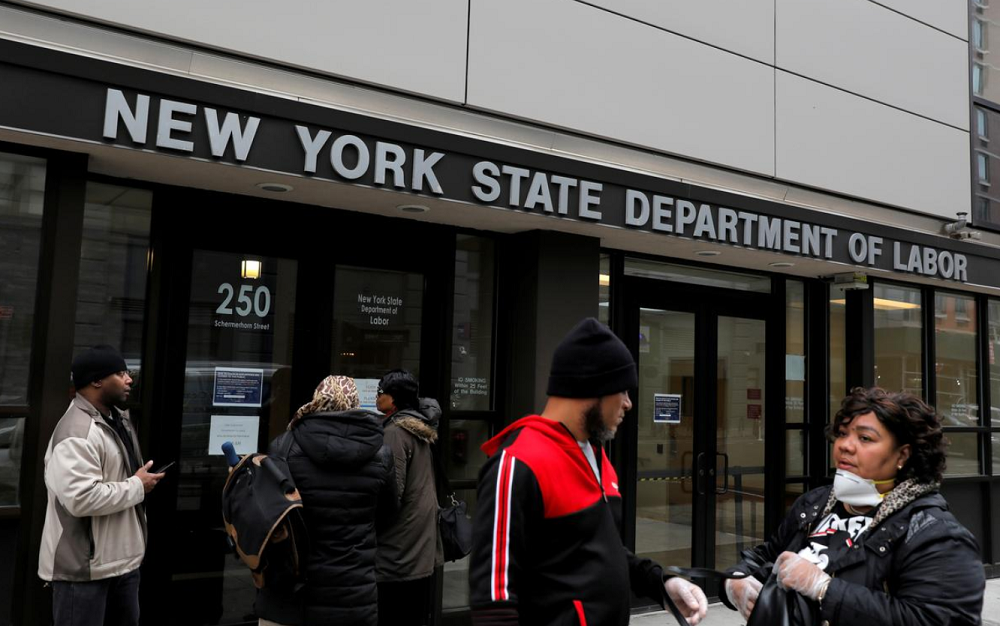U.S. unemployment benefits likely totaled a staggering 15 million
April 09, 2020 @ 14:57 +03:00
The number of Americans seeking unemployment benefits in the last three weeks likely totaled a staggering 15 million as tough measures to control the novel coronavirus outbreak abruptly ground the country to halt, which would cement views the economy was in deep recession.
Thursday’s weekly jobless claims report from the Labor Department, the most timely data on the economy’s health, would strengthen economists’ expectations of job losses of up to 20 million in April. The government reported last Friday that the economy purged 701,000 jobs in March. That was the most job losses since the Great Recession and ended the longest employment boom in U.S. history that started in late 2010.
The number of initial claims for state unemployment benefits probably slipped to a seasonally adjusted 5.250 million for the week ended April 4 from 6.648 million, according to a Reuters survey of economists.
The anticipated lower reading is likely because the model that the government uses to strip out seasonal fluctuations shows a downside bias for last week’s data. States also appear to be struggling to process high volumes of claims.
Estimates in the survey were as high as 9.295 million. Going by the average forecast, last week’s claims data would bring the cumulative jobless benefits claims to more than 15 million since the week ending March 21.
With more than 95% of Americans under “stay-at-home” or “shelter-in-place” orders, reports continue to mount of state employment offices being overwhelmed by a deluge of applications. Mike Ricci, a spokesman for Maryland Governor Larry Hogan, wrote on Twitter on Wednesday that “we have approximately 1,000 calls coming through in every two hour period of time,” noting that “currently, federal employees and people who have worked in multiple states cannot file online.”
The National Bureau of Economic Research, the private research institute regarded as the arbiter of U.S. recessions, does not define a recession as two consecutive quarters of decline in real gross domestic product, as is the rule of thumb in many countries. Instead, it looks for a drop in activity, spread across the economy and lasting more than a few months.
U.S. weekly jobless claims seen hovering near record highs, Reuters, Apr 9








